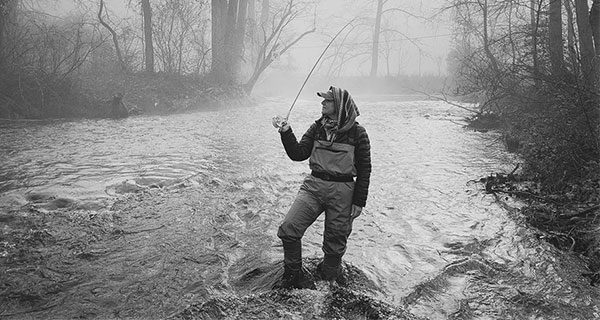December in the Appalachians is a time to reflect on the past year and shift gears down to a slower pace until the first warm winds of spring slip down the trout streams. Trout in the cold water of winter are normally pretty sluggish about taking a fly unless it practically bumps them on the nose, or is simply just too good to pass up. Trout will eat that’s for sure. Usually during a typical day on your favorite trout stream a rising shift of the water temperature of 3 or 4 degrees will occur and, during this time period, trout will probably move the most to take a fly. That movement may only be a couple of inches but it’s an easier target to hit.
Being on the river during this time period sometimes is crucial to success. Most trout in the mornings will be found close to the bottom and dead drifting nymph patterns is usually the most productive. When the sun comes up and starts the warming process fish will sometimes start to suspend a little off the bottom. Now if it’s really a warmer than normal winter day they may be within a foot or two of the surface for a little while. This makes them a target for dry dropper fishing, a swung wet fly, or soft hackle. Streamers will also work sometimes extremely well during this “up time” for the fish. When the fish are suspended you can literally fish underneath the fish with a nymph rig with no success. It’s still important to put your fly on their nose.
Later in the day, when the sun goes behind the ridge and the water temperature starts falling, the trout will usually sink back down to the bottom of the river to spend the cold night. This is when I pack my fly rod into the truck and head towards the cabin for a warm drink and to spin up a few flies.
Give David Hulsey a call at (770) 639-4001 to book a class or a guided trout trip. See his website at www.hulseyflyfishing.com.
